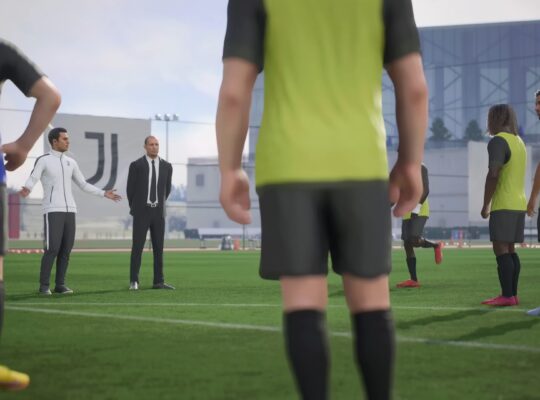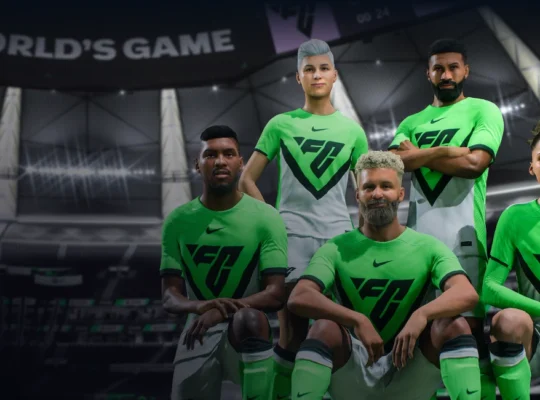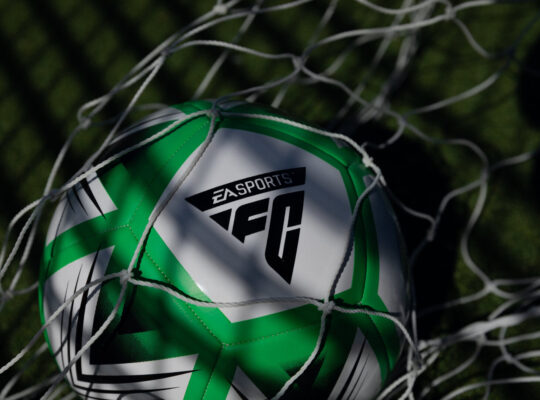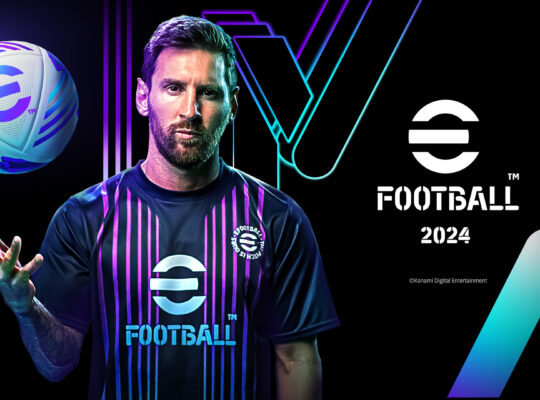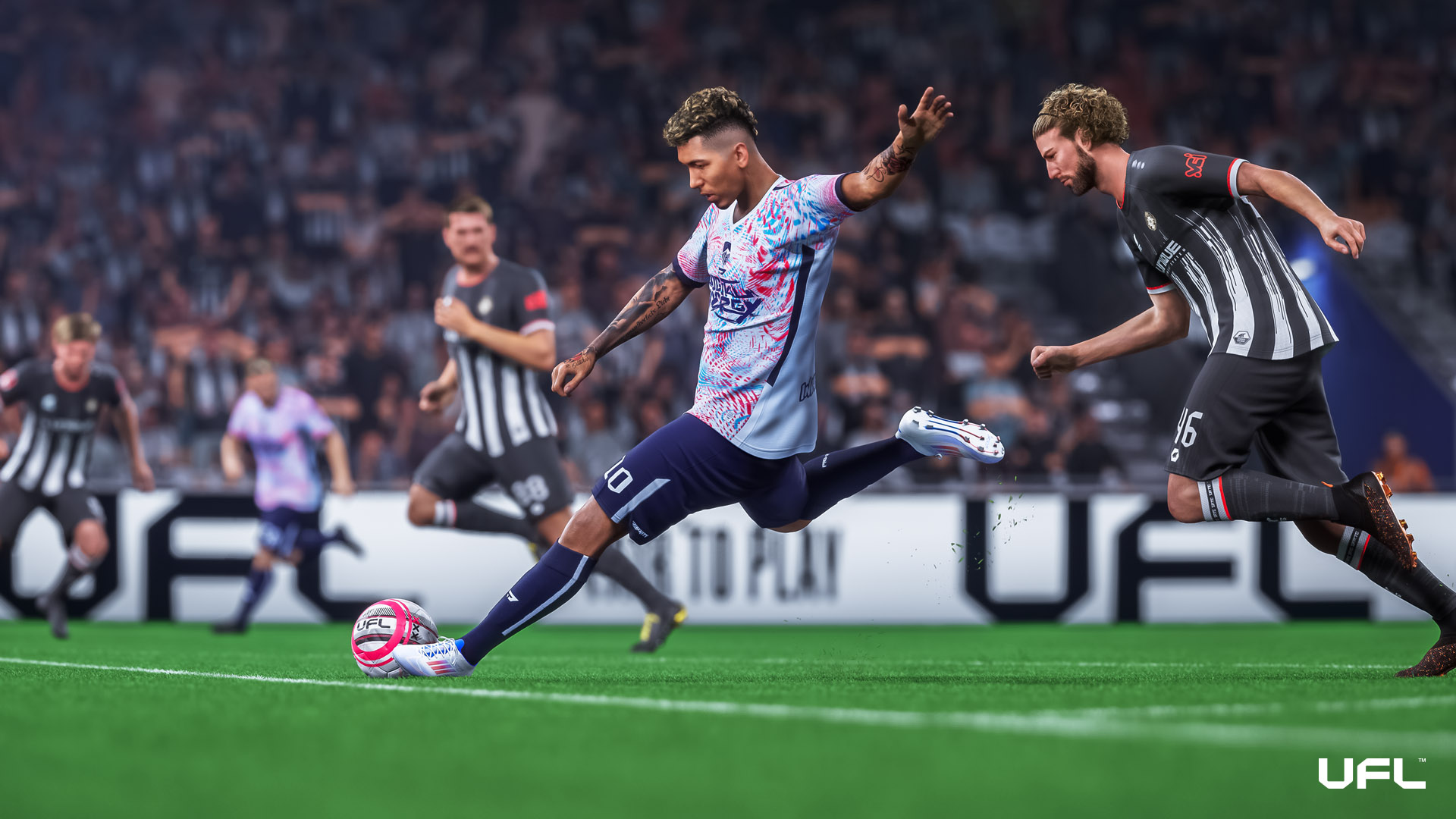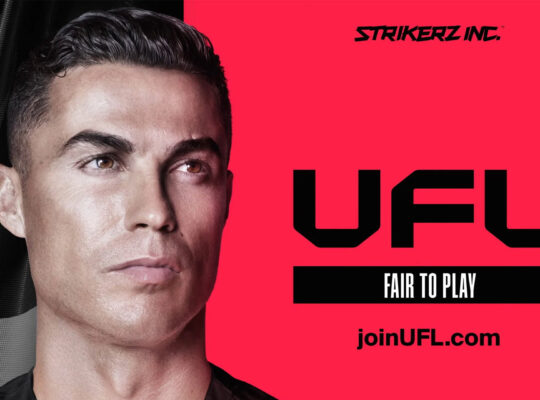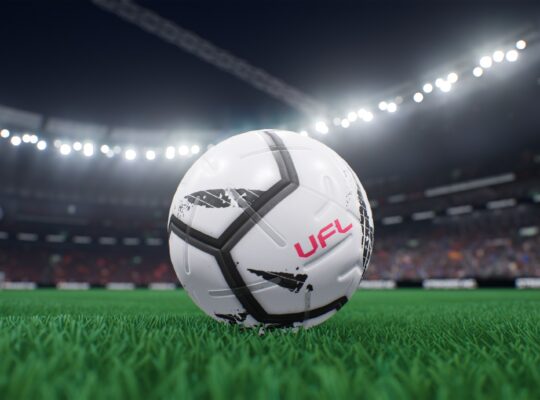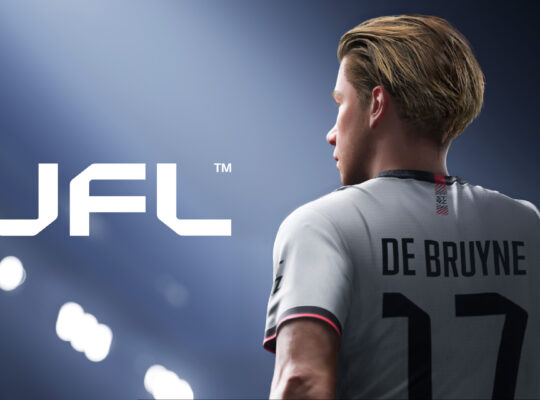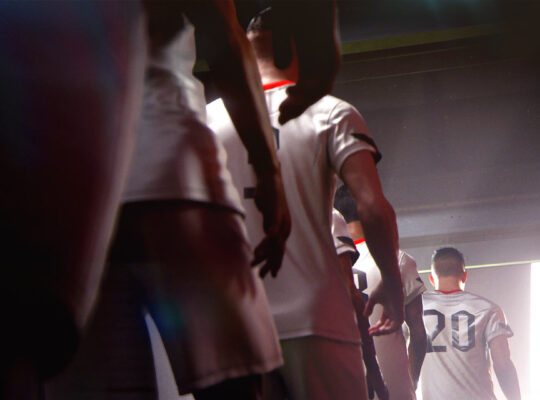The open beta of Strikerz Inc’s UFL for the PlayStation 5 and the Xbox Series S|X was highly anticipated, especially by those seeking an alternative to the EA Sports FC and eFootball franchises.
As someone deeply involved in football games for years, I approached UFL with great excitement and scepticism. The experience provided a comprehensive look into the game’s potential, its current shortcomings, and the path it must take to challenge the dominance of its established competitors.
This review will analyze various aspects of UFL open beta, from visuals to gameplay mechanics, and more, offering a thorough evaluation of what the game has to offer.
User Interface
UFL greets you with a user interface that is easy on the eye. The menus are clean, fast and easy to navigate, which made the initial setup effortless. This polish in the UI compares positively to EA Sports FC 24, whose menus can sometimes feel cluttered and slow.
The beta gave users a glimpse into what it is like to build and customise their own team and take into competitive ranked play.
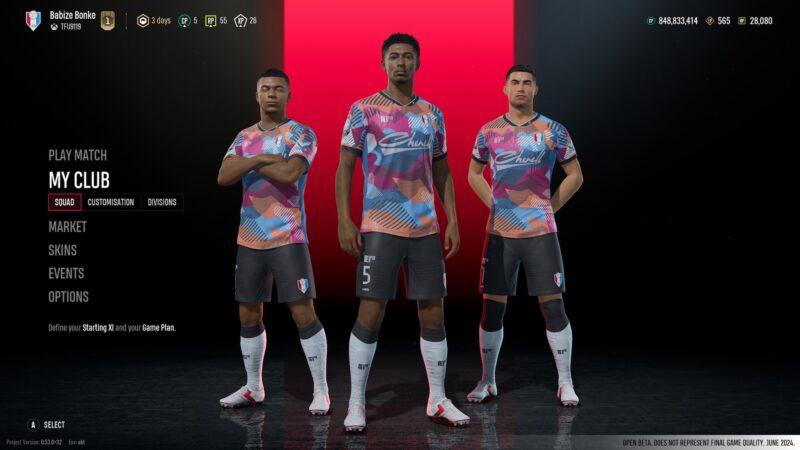
While the squad selector screen can look bland initially, it quickly comes to life as users apply different skins to their players. The layout is similar to that of FC 24, with the game plan and custom tactics looking like replicas of EA’s layout.
This makes setting your team up an easier task, as it is so familiar, but it would have been nice to see them innovate in this area and provide users with a unique experience.
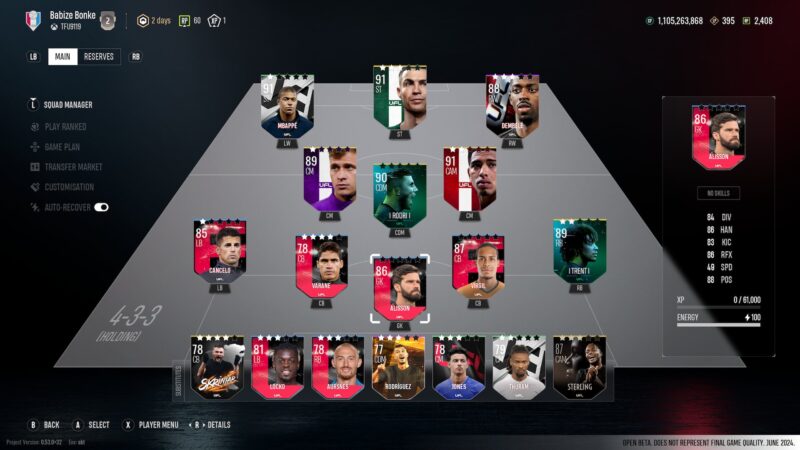
Visuals and Match Presentation
Visually, UFL held its own. The game looked cleaner and more polished than expected, with great player models and well-designed stadiums. The presentation was bright and colourful, adding to the game’s enjoyment. One could even argue that some of the player models and designs look even better than those in the other, more established games!
Vinícius Júnior #FC24 vs #eFootball vs #UFL ⚽️ 🎮
Which version is the best? 👀 pic.twitter.com/Ym1PPfzkWT
— 𝙄𝙉𝙁𝙄𝙉𝙄𝙏𝙔 𝙁𝘾 (@theinfinityfc) June 8, 2024
The commentary and stadium atmosphere could use some work, but they are both minor details, especially for a beta. The overall match presentation is good, but there is much room for improvement, especially when compared to the high standards set by EA Sports FC 24.
You can only hear the commentator talk about how there seems to be “a Mexican standoff” before you long for the fluid and seamless commentary in EA Sports FC 24 or the familiar voice of eFootball’s Peter Drury.
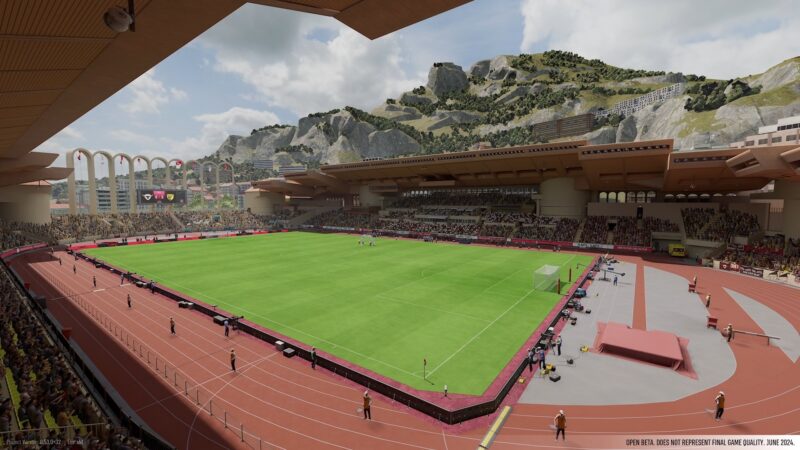
UFL, particularly during the open beta, positioned itself as the worst of the three in this aspect. This points to an overall lack of polish in the game. Enhancing the visual details, player animations, and overall presentation will be essential to attracting and retaining users who have grown to expect top-tier graphics from their football games.
While UFL’s visuals are commendable, striving for more lifelike animations and realistic environmental effects will help it stand out further.
Gameplay Mechanics
If you ask eFootball players, UFL “feels like FIFA,” and if you ask FC players, the game “feels like PES.” In reality, UFL is somewhere in between, taking elements from both while adding their own unique spin on the genre. Strikerz Inc. boldly prioritised manual defending in ways other games do not.
The defensive AI, while present, is not nearly as involved as it is in FC or eFootball. While this can prove challenging at first, it is very rewarding once the user comes to terms with it. This aspect of UFL introduced a refreshing level of realism and skill to the game, making successful defensive plays truly satisfying.
The need to manually time tackles and position defenders correctly added depth and authenticity, enhancing the game compared to more automated systems.
However, some of the attacking mechanics felt far too assisted in its current state, making it less engaging for players who prefer a more manual approach. This assistance, particularly with passing, often made the game feel “on rails,” detracting from the sense of control and creativity. Shooting mechanics need significant adjustments.
Finesse shots from outside the box were far too powerful, often feeling like the only viable scoring method, while standard shots were frequently saved too easily. This imbalance made it difficult for players to diversify their attacking strategies and often resulted in attacks being painfully predictable.
The game’s physics also needed significant work. Improving the physics engine to ensure realistic ball and player interactions is crucial. Ball physics, in particular, needs refinement to behave more naturally, especially in different types of play.
I was able to overlook this in the beta, but I would be very disappointed if there were no significant improvements by the time of the game’s full release. Enhanced collision detection and more lifelike player movements will be key in elevating UFL’s gameplay experience and making the game feel more polished.
Dribbling and Passing
Dribbling is another aspect that needs significant work. In possession, the game can feel clunky and awkward, with players moving slowly and the game just feeling unresponsive. For those who know, it felt like playing eFootball on a 2 or 3-bar connection.
The dribbling is probably intended to feel more natural than that of FC 24, but it could do with some work to greatly improve the user experience.
Worse than this, though, is the implementation of the sprint dribble. Pressing the sprint button often caused a loss of control, particularly with the lower-rated players. Often, the player in possession takes a heavy touch and then slows down, making it easy for the defender to overcome them, no matter how high or low their pace attributes are.
This is the gameplay I had yesterday: It does some players have a hard time dribbling with some delay issues. Sprinting is VERY risky and has to be timed right. But overall, the passes I made could have been easily intercepted if it was #FC24 but does feel more manual #UFL pic.twitter.com/BABbvlZunr
— ObiKenobi (@ObiKenobi93HD) June 8, 2024
While it is clear that the intention is to create a game that does not offer more than a kick-and-rush experience, it is incredibly frustrating not to be able to take advantage of your attacker having acres of space.
Skill moves were by far the best way to move when in possession. With the inputs being the same as in FC 24 for most of the skill moves, it was easy to pick up a controller and start performing them. Even simple skills such as fake shots and ball rolls provided much-needed finesse, making dribbling feel far more fluid and responsive.
Can’t lie some of the new Skill Moves in UFL are clear of FC24… 🧐#UFL @UFLgame
— OZiLLA (@ozilla_fc) June 7, 2024
Enhancing the left stick dribbling and ensuring smoother transitions between actions will make movements more intuitive and enjoyable. If players took the time to master the dribbling, they could score beautiful goals, but the effort required was disproportionately high compared to the rewards.
Monetisation and Progression System
One of the standout features of UFL open beta was its play-to-win model. You are allowed to acquire the players you want, and to do so, you have to win more games to earn cash (CP) and reputation points (RP).
Randomised packs are reserved for skins, used to customise specific players while giving the team boosts to XP, recovery, and the amount of in-game currencies earned per game.
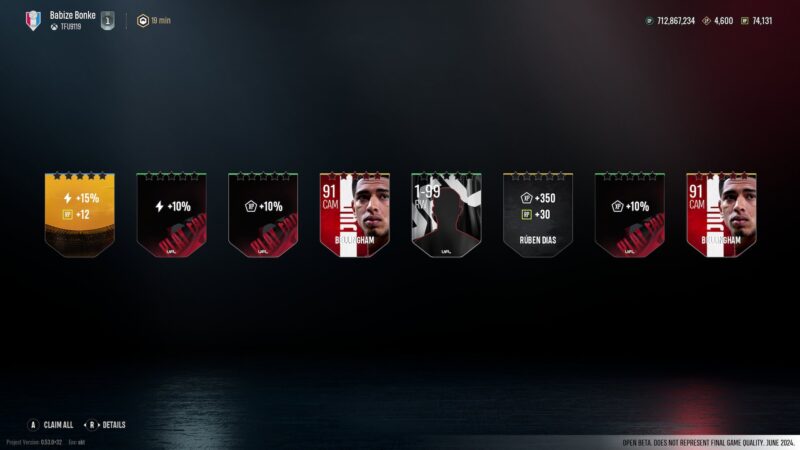
This approach is a significant departure from the heavily monetised structure of EA Sports FC 24, particularly in its Ultimate Team mode. UFL’s system of grinding to improve the team and the ability to level up faster through skins was a refreshing change that emphasised skill and effort over financial investment. By rewarding players for their time and effort rather than their spending, UFL offers a fairer and more satisfying progression system.
The ranking system and objectives in UFL were engaging and provided a compelling reason to keep playing. The promotion matches added a competitive edge that was both exciting and motivating.
If expanded upon, this aspect could create a strong community of dedicated players. Concerns about everyone having the same team could be mitigated by a slower progression in the full release and the introduction of promo cards and skins to maintain a dynamic power curve.
This is what I LOVE about @UFLgame
3 games in a row I couldn't score a single goal…made a few adjustments to tactics and decisions in games and BOOOOOOM 💥
WIN STREAK TO PLATINUM 👑 pic.twitter.com/QOATPP88cM
— Alexion (@AlexionFUT) June 9, 2024
The game’s old-school store for skins or cosmetics and a well-functioning market were also appreciated, contributing to a balanced and enjoyable progression system. Not having a market and squad-building challenges, though, which FC 24 players probably spend more time engaging with than actually playing the game, could hurt or help UFL. Only time will tell.
Community Response and Active Development
The one thing that UFL has done far better than any of its competitors is engaging with its community. Since the game was announced, they have maintained an active Discord server where they discuss with eager gamers, provide regular updates on the game’s development on the official UFL YouTube channel, and engage gamers on social media.
Yeah, this is how you win over new players fair play 👏👏 https://t.co/bWnJ0nITBc
— Matt Craig (@MattHDGamer) June 8, 2024
To truly compete with EA Sports FC 24, UFL must focus on several key areas. Listening to player suggestions and swiftly addressing concerns as they did during the beta can foster a strong community and keep the game evolving in the right direction.
Active community engagement and continued regular updates to the game based on player feedback will be vital in building a great game and a loyal player base. This is a lesson that all game developers can take from UFL.
Final Remarks
Despite its imperfections, the UFL open beta showcased a game with immense potential, as it registered over 1 million installs in the first day of release.
The foundation laid by UFL is promising and with continued development, community feedback, and a focus on fair and balanced gameplay, UFL could become a worthy competitor to EA Sports FC, providing football gaming enthusiasts with the variety and competition they crave.
OBT Day 1 we hit 1M installs… could you think of that? You did it. We’re so honoured, community 🤜🤛 thank you pic.twitter.com/R8jCDwAAwj
— Eugene Nashilov (@styxflows) June 8, 2024
Indeed, the game might even be a few years behind truly matching its competitors’ level of polish and stability, but the experience I had with the beta makes me want to give Strikerz Inc. some grace. Despite its flaws, bugs, and shortcomings, I just could not put my controller down, which counts for something.
With the right steps, UFL can establish itself as a significant player in the football gaming world, carving out its own niche while drawing from the strengths of both EA Sports FC and eFootball.

